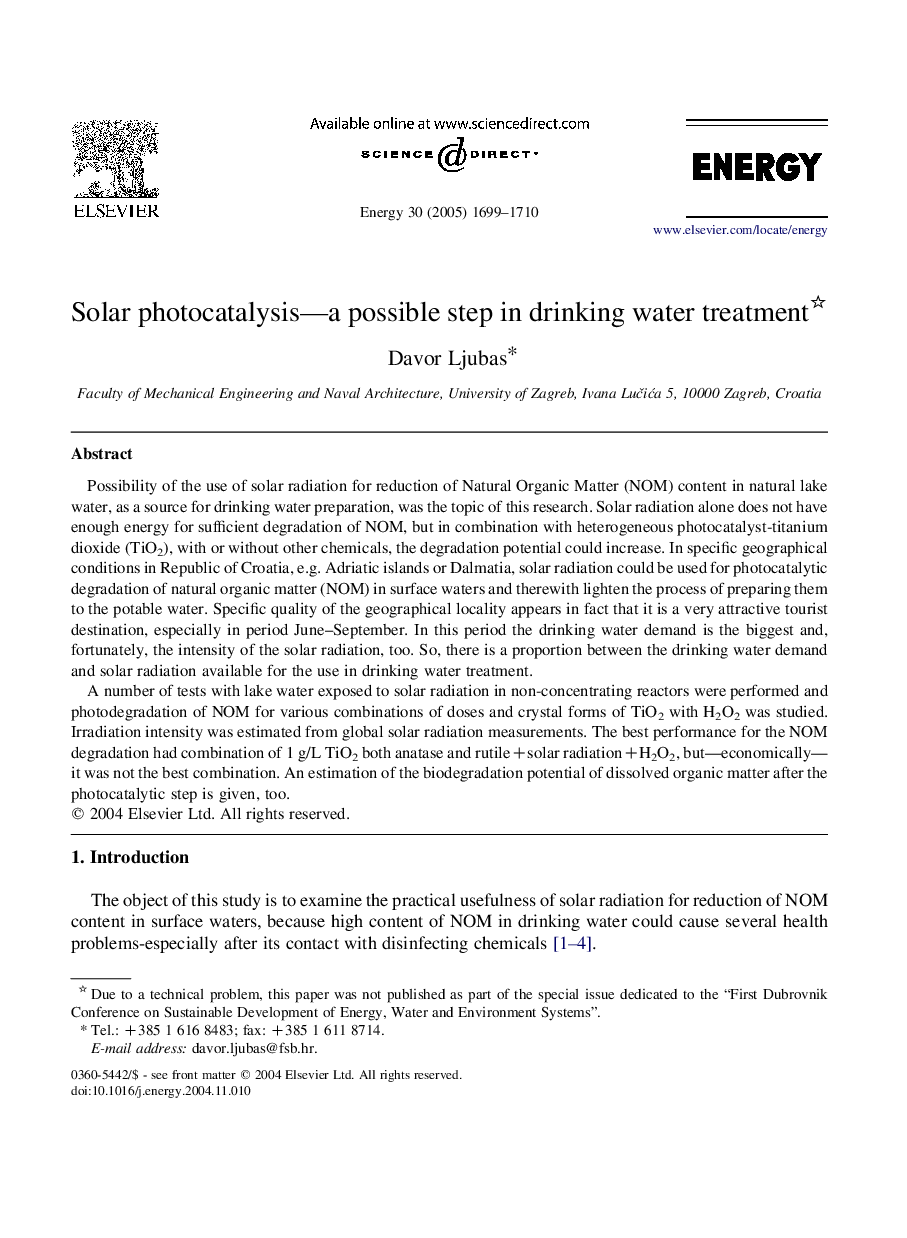| Article ID | Journal | Published Year | Pages | File Type |
|---|---|---|---|---|
| 1736624 | Energy | 2005 | 12 Pages |
Possibility of the use of solar radiation for reduction of Natural Organic Matter (NOM) content in natural lake water, as a source for drinking water preparation, was the topic of this research. Solar radiation alone does not have enough energy for sufficient degradation of NOM, but in combination with heterogeneous photocatalyst-titanium dioxide (TiO2), with or without other chemicals, the degradation potential could increase. In specific geographical conditions in Republic of Croatia, e.g. Adriatic islands or Dalmatia, solar radiation could be used for photocatalytic degradation of natural organic matter (NOM) in surface waters and therewith lighten the process of preparing them to the potable water. Specific quality of the geographical locality appears in fact that it is a very attractive tourist destination, especially in period June–September. In this period the drinking water demand is the biggest and, fortunately, the intensity of the solar radiation, too. So, there is a proportion between the drinking water demand and solar radiation available for the use in drinking water treatment.A number of tests with lake water exposed to solar radiation in non-concentrating reactors were performed and photodegradation of NOM for various combinations of doses and crystal forms of TiO2 with H2O2 was studied. Irradiation intensity was estimated from global solar radiation measurements. The best performance for the NOM degradation had combination of 1 g/L TiO2 both anatase and rutile+solar radiation+H2O2, but—economically—it was not the best combination. An estimation of the biodegradation potential of dissolved organic matter after the photocatalytic step is given, too.
